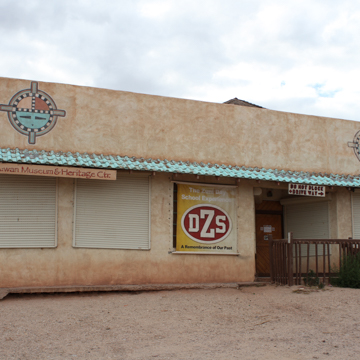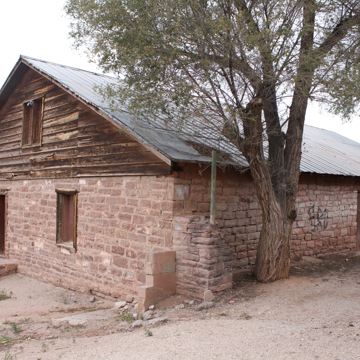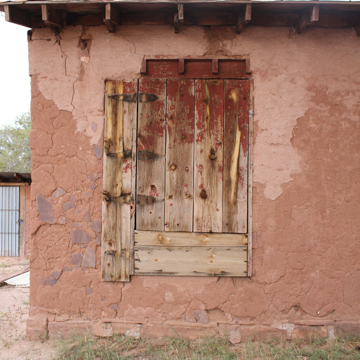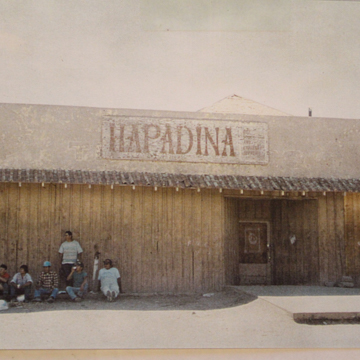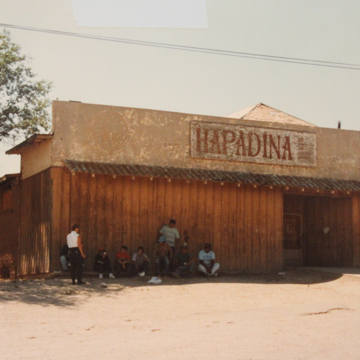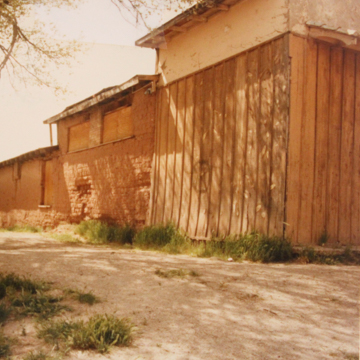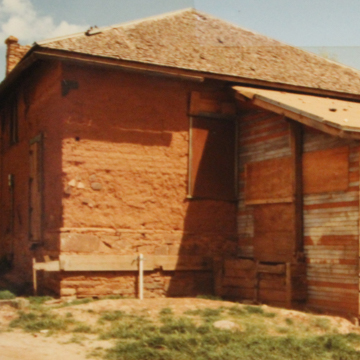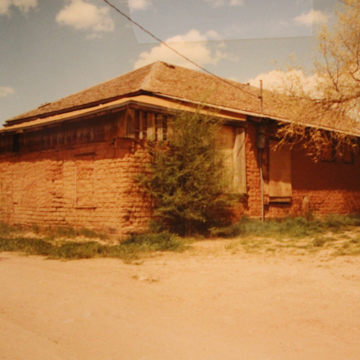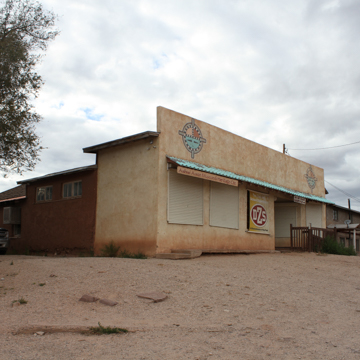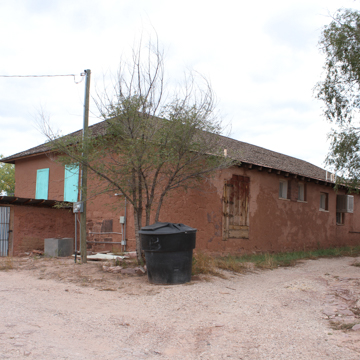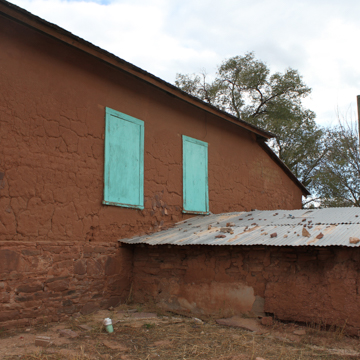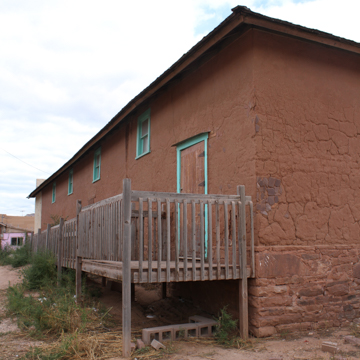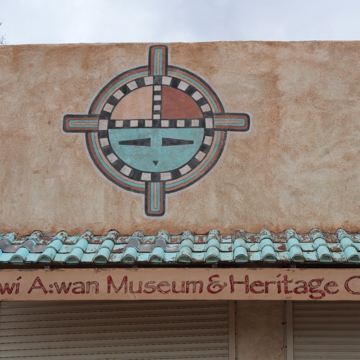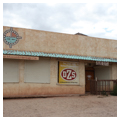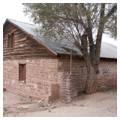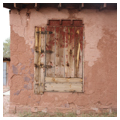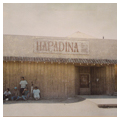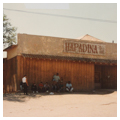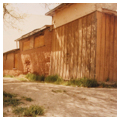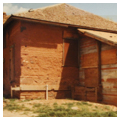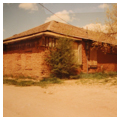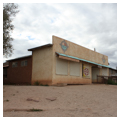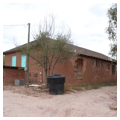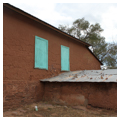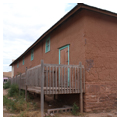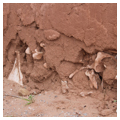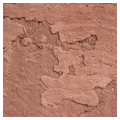You are here
A:shiwi A:wan Museum and Heritage Center
A former trading post, the A:shiwi A:wan Museum and Heritage Center (AAMHC) exemplifies the melding of commercial architecture with local building practices, and remains a vital part of Zuni Pueblo through its restoration as a tribal museum.
The AAMHC stands over mounded ruins on the south bank of the Zuni River, where anthropologist Frank Hamilton Cushing bought and renovated a small house in 1882–1883 (demolished 1971). Douglas D. Graham turned Cushing’s house, which became known as the Hemenway House, into a trading post in the late 1880s. Other non-Zunis congregated nearby, forming a neighborhood known as Halona Plaza with their houses, trading posts, and the Christian Reformed Mission. A bridge connected this outlying settlement to the pueblo in the early twentieth century, facilitating trade and suburban expansion. As a trading post, the Hemenway House changed hands often until Charles H. Kelsey purchased it in 1906, partnering with Albuquerque’s Ilfeld Trading Company to manage the business.
Kelsey built the present structure south of the Hemenway House between 1908 and 1911. It had a full basement, adobe walls on solid sandstone foundations, and a gabled, cedar shingle roof. The wood-frame facade with a stepped silhouette displayed the Ilfeld name over a full-width porch, central double-door entry, and two flanking windows. Inside, merchandise filled shelves from floor to ceiling, and countertops wrapped around three sides of the open center. The trading post extended credit to Zuni customers against their crops, wool, and lambs, which were then resold. The post had substantial storage in the basement with an elevator system to move goods, and a large sandstone warehouse to the south.
In 1934, Kelsey renamed it the Zuni Trading Company, and added a sixteen-foot office extension on the southern side. He enclosed the front porch in a new facade with a straight profile, pressed-tin awning, and four picture windows, later covered in board-and-batten siding. The Zuni artist Teddy Weahkee painted two sun faces on the facade. In 1962, the store shifted to a self-service model, with customers selecting items from shelves and bringing them to a cashier by the door. From 1968 to 1994, the Vander Wagen family owned the building, using it as a grocery, furniture and lapidary store, dry goods store, and storage.
In poor condition by the 1990s, the building was renovated as a proposed youth center in collaboration with Cornerstones Community Partnerships (CCP). When its use as a youth center became unfeasible, the building was turned over to the tribe in 1997. In 2001–2002, the old trading post became home to the AAMHC, a locally based institution incorporated in 1992. Oriented toward community development founded in knowledge of its past, A:shiwi A:wan means “Belonging to the Zuni People,” but it also serves as an intermediary between the community and outside entities such as other museums.
After a long planning process, Zunis reworked the museum concept according to their cultural values. Partitions channel visitors through exhibits presenting Zuni perspectives on their history and art from ancient times into the present. AAMHC projects have also included youth educational programs, archival efforts, and museum collaborations with institutions holding Zuni collections. Other important initiatives emphasize connections to the wider Southwestern landscape, such as the Zuni Map Art Project, which reconceptualizes the region in Zuni terms. The commercial purpose of the old trading post has been reconceived in service of cultural preservation as it mediates the Zuni community and the outside world.
References
Anyon, Roger, and T. J. Ferguson. “Hapadina Store: A Brief History of a Trading Post in Zuni Pueblo, New Mexico.” Zuni Pueblo—Hapadina Trading Post History Folder, Cornerstones Community Partnerships Archives, Santa Fe, NM, 1997.
“Building.” A:shiwi A:wan Museum and Heritage Center. Accessed September 21, 2017. http://ashiwi-museum.org.
“Cornerstones, The Hapadina Building, Pueblo of Zuni, Zuni, NM, 1995-1996.” SWA Cornerstones Community Partnerships Drawing c. 1, Center for Southwest Research, Albuquerque, NM.
Crocker, E. “Condition Assessment and Interim Preservation Proposal for Hapadina, Pueblo of Zuñi, New Mexico.” Zuni Pueblo—Hapadina 1993 Conditions Assessment Folder, Cornerstones Community Partnerships Archives, Santa Fe, NM.
Enote, Jim and Jennifer McLerran, eds. A:shiwi A:wan Ulohnanne: The Zuni World. Flagstaff: A:shiwi A:wan Museum and Heritage Center and the Museum of Northern Arizona, 2011.
Gaspar, Shalie. “The Rehabilitation of the Hapadina Building at Zuni Pueblo: Final Report.” Zuni Pueblo—Hapadina 1997 NMHPD Final Report Folder, Cornerstones Community Partnerships Archives, Santa Fe, NM.
Isaac, Gwyneira. Mediating Knowledges: Origins of a Zuni Tribal Museum. Tucson: University of Arizona Press, 2007.
Steinberger, Heather. “Radical New Way to ‘Museum’: A:shiwi A:wan Museum and Heritage Center.” Indian Country Today, September 18, 2014.
Thomas, Elaine. Prayer Warriors: Andrew and Effa Vander Wagen in Zuni. Zuni, NM: Self Published, 1997.
Zuni Museum Matters: The Newsletter of the A:shiwi A:wan Museum and Heritage Center, Zuni, New Mexico 1, no. 1 (Summer 1993).
Writing Credits
If SAH Archipedia has been useful to you, please consider supporting it.
SAH Archipedia tells the story of the United States through its buildings, landscapes, and cities. This freely available resource empowers the public with authoritative knowledge that deepens their understanding and appreciation of the built environment. But the Society of Architectural Historians, which created SAH Archipedia with University of Virginia Press, needs your support to maintain the high-caliber research, writing, photography, cartography, editing, design, and programming that make SAH Archipedia a trusted online resource available to all who value the history of place, heritage tourism, and learning.








